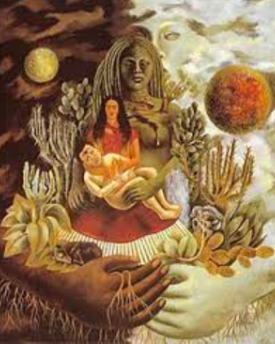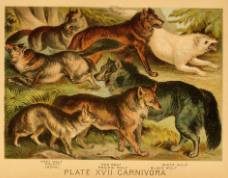Art and Feminism

Image via Wikipedia
December 7, 2022
Feminism is a concept that focuses on the advocation for women’s rights on the basis of equality. The movement gained momentum in the 1910s and 1920s with the rise in women’s suffrage movements. Feminist art rose to popularity around the late 1960s, about 50 years after feminism first saw regard. Feminism portrayed in art can be linked back to second wave feminism, which was unlike first wave feminism in that it focused on issues such as sexuality, domesticity, and reproductive rights.
The feminist art movement was started on the fact that female artists could only ever be prosperous if their art did not show any indication of their gender. They were forced to create art based on topics that had nothing to do with the experiences that come with womanhood and femininity. Unlike their male counterparts, women artists had to de-gender and change their pieces if they wanted to become a successful artist. Feminist artists started to notice this trend. Men were able to portray an idealized version of what it is like to be a woman, and women weren’t even allowed to speak up about their own experiences. The feminist art movement was created as a way for women to not feel shame for wanting their story to be heard. The group of women who created feminist art also created a safe space for everyone to express the grievances of their past, no matter their gender.
Most art that qualifies as feminist art draws inspiration from artists like Eva Hesse and Louise Bourgeois. These artists, along with many others, were seen as pioneers for feminism in art. They created art that uplifted the female body and portrayed real-life women, not the romanticized woman who is seen as an object for men to use for pleasure, an ever-present role for women in society. The goal of the feminist art movement was to change the attitude and stereotypes depicted towards gender in art.
The feminist art movement doesn’t stop at fighting for the creative freedom of women artists, there were also many protests held in the 1970s and beyond that fought for female representation in famous art museums. Museums such as the Museum of Modern Art in New York (also known as the MoMA) were protested by feminists for not including female artists in their museums. When the protests started, less than 10% of art displayed in certain exhibitions at the MoMA was created by women painters, sculptors and multimedia artists. These protests eventually garnered enough support and the percentage of women exhibited in museums and galleries around the world went up exponentially. Women in art were starting to be heard.
The role of feminism in art was to create a space in the world of art where women could create the art that they wanted to. In this safe space, women were able to feel the freedom that male artists were able to have. They were able to be whatever and whoever they wanted. The feminist art movement was also a gateway to the discussion of many other issues that have to do with sexuality and race in art.









































































































































